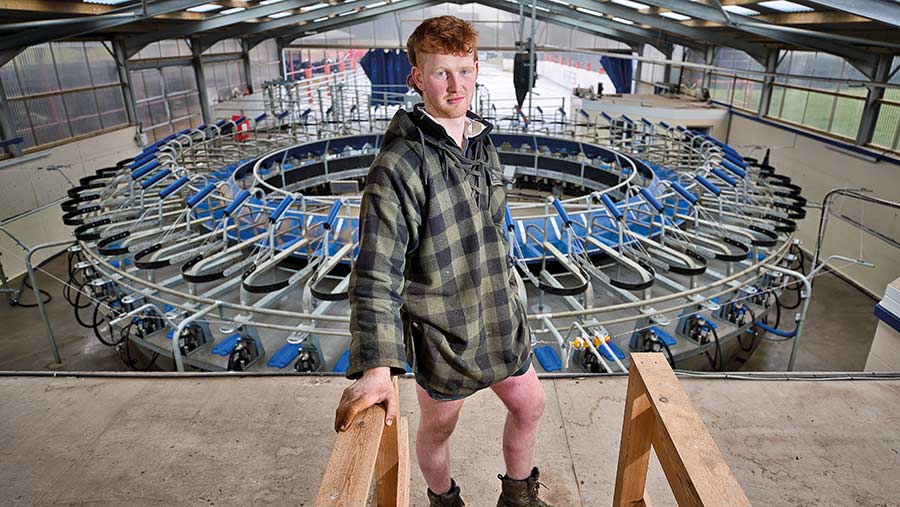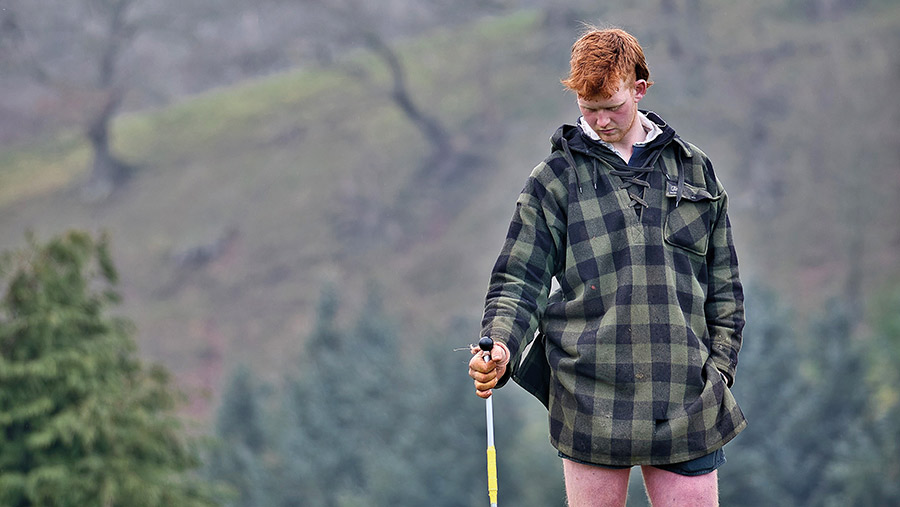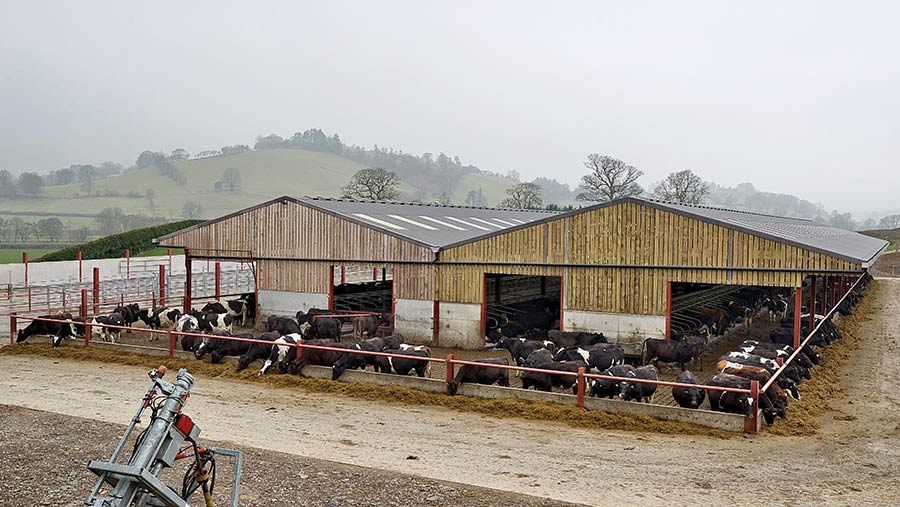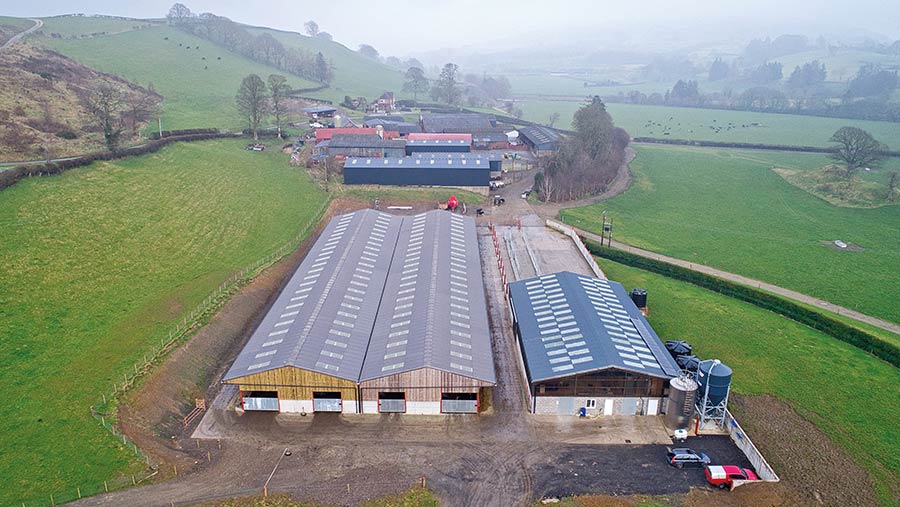How a young farmer helped with dairy transition after tragedy
 Morgan Tudor © Richard Stanton
Morgan Tudor © Richard Stanton Morgan Tudor was just 17 and midway through calving when his father, Richard, died in a farm accident.
The Tudor family, from Llysun Farm, Llanerfyl, Powys, had converted from beef and sheep to dairy to increase profitability and aid succession.
But tragedy struck last spring, when they were just four weeks into their first spring-calving season, without a milk contract.
“We didn’t have a contract in place. Dad was concerned and was thinking about how we could produce the milk as cheaply as possible until we got something lined up. We were going to discuss it that night,” recalls Morgan.
But his father never came home from spreading fertiliser that afternoon.
See also: Award-winning beef farmer sells suckler herd in switch to dairy

Morgan Tudor © Richard Stanton
Spurred on by his love of the farm and determined to carry on his dad’s legacy, Morgan says quitting was never an option.
“There’s nothing else I wanted to do other than farm. I woke up at 5am the next morning and carried on; there’s nothing else you can do.”
Morgan turned 18 just one month after the accident and is still at Reaseheath College studying for his agricultural diploma.
Testament to the hard work and courage of the entire Tudor family in the face of tragedy, they are just about to head into their second season, having expanded the herd from 350 to 550 cows and taken on more land in a joint venture with a neighbour.
Farm facts
- Farms 303ha (750 acres), with land rising from 167m to 426m
- Receives 1,651mm of rain annually
- 200 ewe lambs bought and sold as yearlings
- Milks 550 cows (150 owned in a joint venture with a neighbour)
- 12-week spring block-calving
- Produced 423kg of milk solids last season, with 520kg of concentrate fed through the parlour
- Three full-time staff, plus one part time
- Twice-a-day milking through a 50-bail rotary Delaval parlour, with automatic teat sprayers and automatic cluster removal, so only one person has to milk
- Dairy bulls and beef calves sold at Market Drayton
Milk contract
Last June, the Tudors managed to secure a milk contract with Yew Tree Dairy. This catapulted their milk price from spot prices of 5-10p/litre to an average of 27.5p/litre.
The contract couldn’t have come soon enough, with the family having invested heavily in new infrastructure. They secured an HSBC bank loan to build new cubicle sheds for 350 cows, with underground slurry storage, a 50-bail Delaval rotary parlour and a 30,000-litre milk silo.
The loan also allowed them to lay 7km of tracks and 6km of water pipes to supply the 122ha (301-acre) grazing platform.
Four-month-old Jersey cross Friesian heifer calves, costing about £450 a head, were sourced from four dairy farms in North Wales in June 2018.
The beef herd of 120 Salers and Simmental was dispersed that October, and a further 50 in-calf heifers were purchased ready to milk the following spring.
“We bought them as calves because they were one-third of the price [of heifers] and it gave us control of breeding from the start,” explains Morgan.
At first, the plan was for a technician to artificially inseminate the cows, but since Morgan completed a course, he does all the breeding himself.

The new shed comprises 350 cubicles © Richard Stanton
Breeding
In 2019, for the first cycle, the cows received dairy semen (either Friesian or Jersey), then on the second cycle they were served with Angus semen.
After this, the bulls were turned in for the remaining six weeks to mop up any repeats. Heifers were served to Angus bulls for calving ease.
Last season, Belgian Blue semen was used on the first calvers. Overall, 65% calved in the first three weeks of the block and just 3.5% were empty after 12 weeks.
This year, the plan is to use sexed semen on all of the heifers to reduce the number of dairy bull calves.
Just like his dad, Morgan has a keen focus on breeding.
“I think we have a lot to do in the next 5-10 years to find that perfect cow that weighs 500kg, will eat 500kg of cake, and give 500kg of milk solids.”
Calving is a family affair with Morgan’s mum, Catrin, and his younger sister, Lois, tending to calves.
Last year, it was “all hands on deck” as they also lambed 400 ewes. However, the family has since sold these in favour of buying ewe lambs, summering them, and selling them as replacements, to reduce the spring workload.
This season, heifers started calving on 20 February, followed by the cows on 1 March. The target is to reduce the block from 12 to nine weeks by bringing in more heifers and running a replacement rate of 20%.
“It might mean having 10% empty at nine weeks, but we have the scope to keep plenty of replacements relatively cheaply,” adds Morgan.
Heifers were wintered on kale until 2 January and will be summered on the hill ground.

© Richard Stanton
Grazing
To minimise costs and workload, the target is for cows to be housed for just four months. They are turned out to graze after calving and grazed for 12-hour breaks each side of milking.
Last year, they grew 13t of dry matter (DM)/ha (5.3t DM/acre) on the grazing platform, with 2.8 cows stocked a hectare (1 cow an acre) but as part of the new joint venture, they will expand the platform by 60ha (148 acres) and increase the stocking rate to 3.2 cows a hectare (1.3 cows an acre).
“It’s been a huge learning curve this year. If it was just a case of losing Dad and carrying on beef and sheep it would have been something, but it has been completely different,” explains Morgan, who squeezed in six months’ work experience on a split-block farm in Carmarthenshire on his year out from college before coming home to milk.
“I still don’t think [his death] has hit me. You have good days and bad days and on [some] days you think ‘he should be here with me dealing with this’.
“I wasn’t thinking of coming home for at least seven years,” admits Morgan, who says he wanted to travel and complete university.
But he is glad they made the move when they did so he could focus his studies on dairying in his final year at college.
“The best thing about the system is you always have the next thing to look forward to and you can always plan ahead.”
Future
Morgan is due to complete his three-year agricultural course at Reaseheath this year and hopes to travel in the future.
He adds: “We have a few years now trying to get everything settled, but I will still go travelling in the dry period.”
He says New Zealand is his first port of call. He also has his sights set on further expansion.
“I’d like to be milking 1,000 cows on two farms and improve grass growth to 15t DM/ha – and, long term, I would like to win the Gold Cup.”
